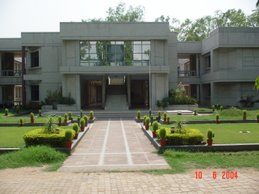Mr. N.K Saran (Chief, Long Product Sales Division, Marketing & Sales South, TATA Steel) visited XLRI for delivering a lecture on ‘Branding Commodities – The TATA TISCON Story’ to the GMP 07-08 batch .
Mr. Saran who is an XL alumnus has wide experience in the areas of quality, strategy, marketing & sales. Earlier, he has also worked as Chief Aspire (Business Excellence) for the quality initiatives undertaken in TATA Steel.
The GMP batch had an enriching session with Mr. Saran, who explained the concept of branding and strategy and why was it so important in today’s internationally competitive environment. The discussion started with branding concepts with examples of some of the famous brands that we see around us today, the latest one being Harry Potter.
GMPians listened with rapt attention as Mr Saran went on to the real story of how TATA Steel went about marketing their TMT bar by the introduction of a branded product (TATA TISCON) in an otherwise unbranded, somewhat inefficient and corrupt TMT market, thus introducing transparency and customer satisfaction while being able to build a name for itself in the process.
The session ended with a very enthusiastic series of question & answers by the GMPians, who did not want to let go of the opportunity to understand how TATA Steel was able to use branding as a tool to bring efficiency into the markets. GMPians are looking forward to more such events to enhance their practical knowledge on various marketing principles vis-à-vis the current developments in India and abroad.
Mr. Saran who is an XL alumnus has wide experience in the areas of quality, strategy, marketing & sales. Earlier, he has also worked as Chief Aspire (Business Excellence) for the quality initiatives undertaken in TATA Steel.
The GMP batch had an enriching session with Mr. Saran, who explained the concept of branding and strategy and why was it so important in today’s internationally competitive environment. The discussion started with branding concepts with examples of some of the famous brands that we see around us today, the latest one being Harry Potter.
GMPians listened with rapt attention as Mr Saran went on to the real story of how TATA Steel went about marketing their TMT bar by the introduction of a branded product (TATA TISCON) in an otherwise unbranded, somewhat inefficient and corrupt TMT market, thus introducing transparency and customer satisfaction while being able to build a name for itself in the process.
The session ended with a very enthusiastic series of question & answers by the GMPians, who did not want to let go of the opportunity to understand how TATA Steel was able to use branding as a tool to bring efficiency into the markets. GMPians are looking forward to more such events to enhance their practical knowledge on various marketing principles vis-à-vis the current developments in India and abroad.
